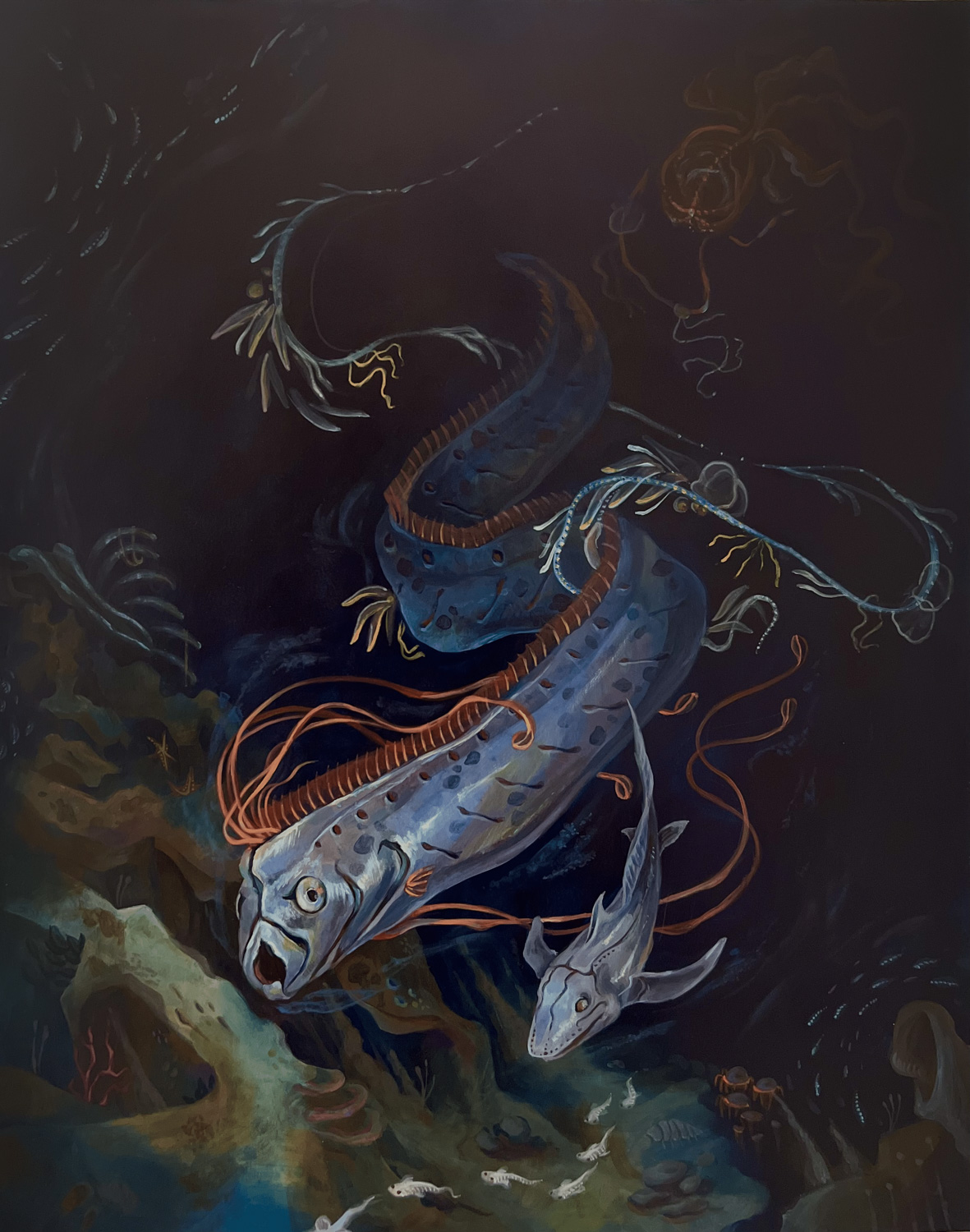Winners of the 2024 Science Without Borders® Challenge
The 2024 Science Without Borders® Challenge invited young artists from around the world to dive into the ocean’s mysteries with the theme, “Hidden Wonders of the Deep.” This theme encouraged students to illustrate the amazing life found in the ocean’s least explored places—from glowing creatures that light up the dark to strange animals living in extreme conditions.
With over 1,700 entries from 82 countries, the competition attracted incredible talent and creativity. Students aged 11-19 brought the deep sea to life with bold colors, detailed artwork, and imaginative ideas that illustrated both the beauty and wonder of life in the deep sea.
The winning artwork stood out because it showcased the wonder of life in the deep sea in a powerful way. These pieces didn’t just look beautiful—they told stories of adventure, discovery, and the importance of protecting the amazing diversity of life in our oceans. We are proud to showcase the 2024 Challenge winners, whose art inspires us to look closer and appreciate the hidden wonders beneath the waves.
Winners & Finalists Ages 11-14:
"Angler and Shrimp" by Lino Sirkin, Age 14, United States of America
Artist's Statement: My painting depicts the moment before a great disaster: a shrimp realizing that it has just swam straight into the terrifying Angler fish, lurking in the darkness. This composition emphasizes the size difference between the small shrimp and the much larger angler fish. The old abandoned submarine is the only other thing able to witness this occurrence in the depths of the sea.
Winners & Finalists Ages 15-19:
First Place (15-19): "Worlds Emerging" by Eva Park, Age 17, United States of America
Artist's Statement: The deep sea holds a plethora of mysteries, many of which are haunting and horrifying. Yet, it sparks fascination with its endless opportunity for discovery. The oarfish emerging from the dark represents the discoveries we have already made, and the siphonophore looms as a reminder of the otherworldliness often found in deep sea creatures. The darkness that shrouds both suggest that there is still much to uncover however. The darkness is not an indicator of lifelessness but is pregnant with possibilities. This feeling of mystery but intrigue is further emphasized by the vast biodiversity hidden in the dark, such as the chimaera shark, atolla jellies, schools of lantern fish, hadal snailfish, and the whale remains glinting in the background. Finally, the single light source coming from the viewer's perspective shows the startle and wonder one might feel in discovering and witnessing such creatures swimming by in the dark depths.




